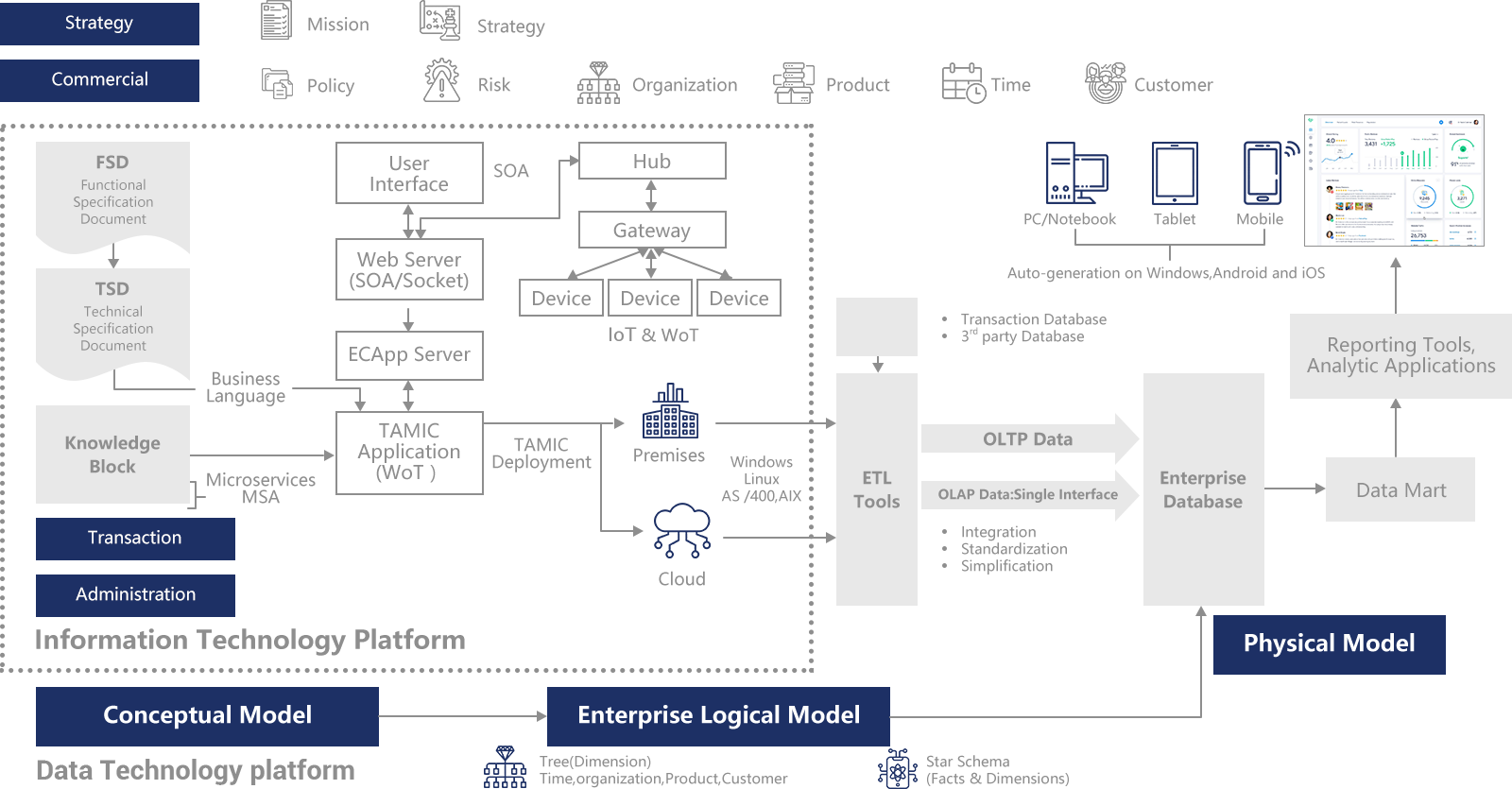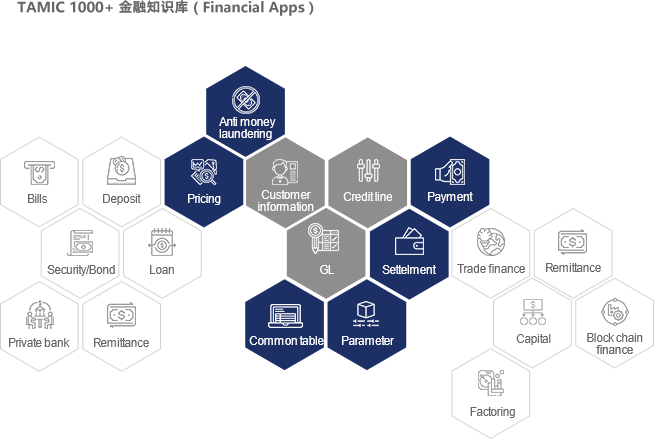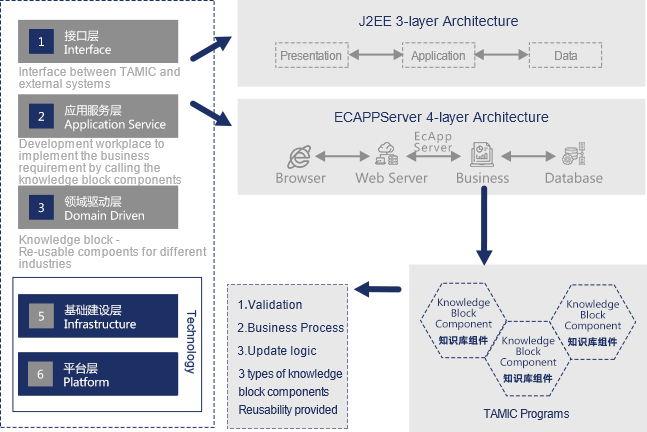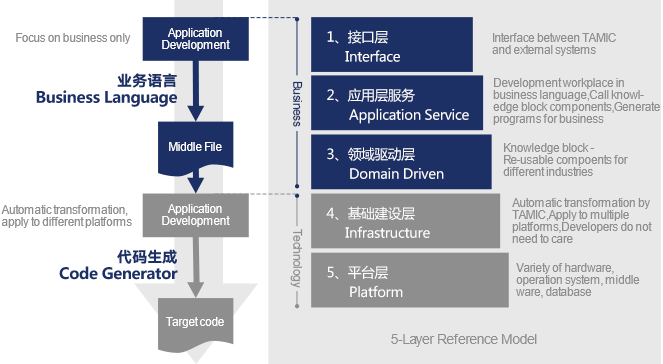Architecture
of the platform
of the platform
Architecture
TAMIC includes two technical aspects:
Information Technology
Business-driven development leveraging the high re-usability and technology encapsulation characteristics of TAMIC platform. TAMIC's own business language reflects the actual business process and activities. On TAMIC, developers only need to concentrate on design and the use of TAMIC business language, codes will be automatically generated by the platform.TAMIC's multi-layer reusability greatly improves the efficiency and quality of standardized software development. For example, technical documents such as Functional Specification Design (FSD) and Technical Specification Design (TSD), can be re-used for newly developed systems on TAMIC. All developed components on TAMIC are in the form of EXP files which can be re-used and deployed to different technical platforms (Operating system, Database, Hardware etc).
Data Technology
Working hand-in-hand with information technology, TAMIC Enterprise Data Model (EDM) helps enterprise to build a holistic data analysis for its business data.All business data will be grouped and normalized according to the EDM, giving enterprise the agility in data analysis from myriads of angles and layers. Unstructured data from front-end or WoT can also be integrated into the EDM for real-time data analysis.




















